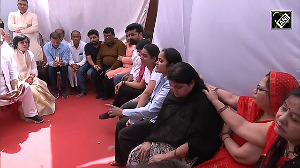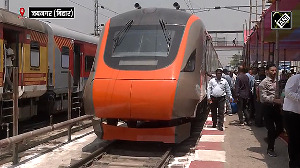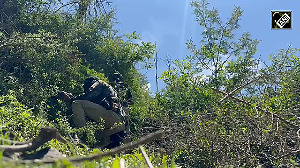When the doorbell rings in Manasie Keshwar's third-floor flat, she doesn't head to the front door but to the television set in her sitting room.
Reaching for the remote, she switches it to AV mode and immediately the screen fills with a bird's eye view of her landing and the person ringing the bell.
If she's still uncertain about the caller, she checks the doorphone facility: a click of a button enables her to speak to the visitor without having to open the door.
For Keshwar security is a relatively uncomplicated affair. Her camera and speakerphone guard the only entrance to her modest dwelling. But for those with larger houses a range of products is now on offer.
Most of the equipment is imported but there are several companies that offer security advice on what is needed to turn your home into an electronic fortress.
The type of security equipment and its cost vary dramatically, depending on the requirements of the house.
For instance, a middle-class home or flat might require nothing more than a basic, stationary black-and-white camera that can be set up outside the door to cover the landing (presumably a small area), and be hooked up to the television set. A reliable camera of this type can easily be obtained for around Rs 2,000.
Obviously, a larger bungalows or farmhouses will require more sophisticated equipment to keep intruders out. For a start, they will almost certainly need cameras on motors, which have a panel tilt, allowing them to cover a larger area. The cost of high-speed colour cameras of this variety can go up to Rs 200,000.
Of course, for a larger dwelling you'll need to buy more than one camera depending on the number of access points. Also, if you think your balconies are located in vulnerable spots, you should consider installing cameras there as well. And if you're not satisfied with just being able to see your visitors, a basic doorphone can be obtained for between Rs 4,000 and Rs 5,000.
Then there are glass break detectors -- small, unobtrusive devices that can be fixed on window panes and programmed to sound an alarm whenever there is an unnatural vibration. The downside is that such devices often overreact even when there is a minor tremor, or when a vibration is caused by, say, loud music. Also, there is a chance of false alarms if the door or window fittings are faulty.
"This is a problem common to many structures, especially flats, in the country," cautions Vivek Pasricha, director, Pro-Interactive Services, a company that provides security-related advice and equipment.
"Wiring and ducting also must be properly done." However, it's possible to adjust the sensitivity index of the device after trial and error. The glass break detector costs between Rs 700 and Rs 800.
You can also use magnetic contact on your doors and windows; these are available for Rs 150 to Rs 200 and can be activated whenever you leave the house. A consolidated control panel for the glass break detectors and magnetic contacts is available for between Rs 6,000 and Rs 8,000.
There's also the auto-dialler, a device that fits in your telephone and automatically dials 10 pre-designated numbers with a pre-recorded message whenever the control panel indicates that something is wrong. You can input phone numbers of relatives, close friends and neighbours with a "help" message or something less dramatic to alert them that you might be in trouble.
Of course, this also means that you have to be extra careful to minimise false alarms -- or you may soon find yourself without any close friends to call! Auto-diallers can be obtained for between Rs 5,000 and Rs 7,000.
And if you're really paranoid about the efficacy of all these gadgets that are designed to prevent break-ins, you should consider getting movement sensors (costing Rs 800 to Rs 1,200) installed at key points inside your house. These can be activated just before you retire for the night.
If a sensor is installed on the stairway, for instance, it will go off in case of any movement on the steps, startling the would-be burglar and giving you enough time to deal with the situation. If you don't want sleepless nights, though, be careful to keep the dog chained up!
Another effective technique is to install lights that are linked to a movement sensor and so come on only when there's an intrusion. This serves the additional purpose of startling intruders. Security consultants insist there's nothing more disconcerting for a burglar than to suddenly find himself in a flood of light.
For large houses, you should consider investing in a time-lapse video recorder, the sort that are sometimes used in big shops. These allow you not only to keep tabs on what is happening at the present time, but to also go back to any point on the tape if you're suspicious that something may have been amiss at a particular time.
Samsung's time-lapse video recorders cost between Rs 20,000 and Rs 26,000, depending on the model. The highest-end recorder offers 960 hours of recording time.
Even more advanced is the computer-based digital video recorder, which records video images in the computer's hard disk drive. It has the same advantages over a standard video recorder that a CD has over a video cassette -- greater storage capacity and easier accessibility.
But a major advantage is that it can be accessed from anywhere, which makes remote monitoring possible. So if you have farmhouses and bungalows scattered all over and you need to set up video recorders at each location, a single computer can monitor them all.
You're most vulnerable when you're leaving or returning to your house. So automatic gate openers are a prudent investment for large-house owners. These could cost anywhere between Rs 60,000 and Rs 300,000 depending on the size of the gate.






 © 2025
© 2025